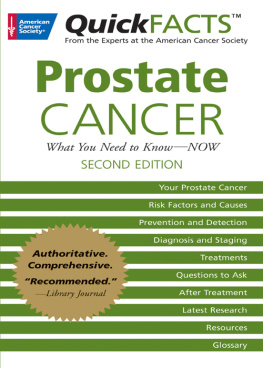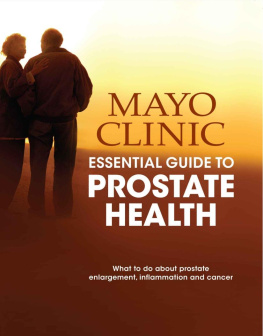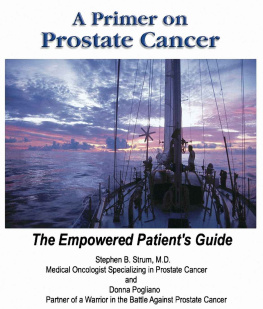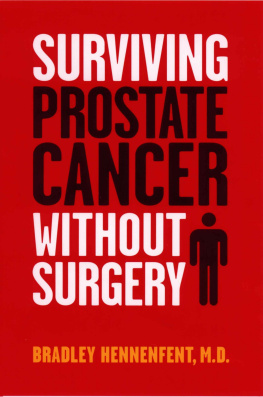Barbara Ravage - Burn Unit
Here you can read online Barbara Ravage - Burn Unit full text of the book (entire story) in english for free. Download pdf and epub, get meaning, cover and reviews about this ebook. year: 2011, publisher: Da Capo Press, genre: Detective and thriller. Description of the work, (preface) as well as reviews are available. Best literature library LitArk.com created for fans of good reading and offers a wide selection of genres:
Romance novel
Science fiction
Adventure
Detective
Science
History
Home and family
Prose
Art
Politics
Computer
Non-fiction
Religion
Business
Children
Humor
Choose a favorite category and find really read worthwhile books. Enjoy immersion in the world of imagination, feel the emotions of the characters or learn something new for yourself, make an fascinating discovery.
- Book:Burn Unit
- Author:
- Publisher:Da Capo Press
- Genre:
- Year:2011
- Rating:3 / 5
- Favourites:Add to favourites
- Your mark:
- 60
- 1
- 2
- 3
- 4
- 5
Burn Unit: summary, description and annotation
We offer to read an annotation, description, summary or preface (depends on what the author of the book "Burn Unit" wrote himself). If you haven't found the necessary information about the book — write in the comments, we will try to find it.
Burn Unit — read online for free the complete book (whole text) full work
Below is the text of the book, divided by pages. System saving the place of the last page read, allows you to conveniently read the book "Burn Unit" online for free, without having to search again every time where you left off. Put a bookmark, and you can go to the page where you finished reading at any time.
Font size:
Interval:
Bookmark:
BURN UNIT
UNIT
SAVING LIVES AFTER THE FLAMES
BARBARA RAVAGE

Many of the designations used by manufacturers and sellers to distinguish their products are claimed as trademarks. Where those designations appear in this book and Da Capo Press was aware of a trademark claim, those designations have been printed with initial capital letters.
Copyright 2004 by Barbara Ravage
All rights reserved. No part of this publication may be reproduced, stored in a retrieval system, or transmitted, in any form or by any means, electronic, mechanical, photocopying, recording, or otherwise, without the prior written permission of the publisher. Printed in the United States of America.
Designed by Trish Wilkinson
Set in 11.5-point Adobe Garamond by the Perseus Books Group
The Library of Congress has cataloged the hardcover edition as follows:
Ravage, Barbara.
Burn unit : saving lives after the flames / Barbara Ravage. 1st Da Capo Press ed.
p. cm.
Includes bibliographical references and index.
ISBN-10 0-306-81346-7 (hardcover : alk. paper)
ISBN-13 978-0-306-81346-7 (hardcover : alk. paper)
1. Burn care units. 2. Burns and scalds. I. Title. RD96.4.R37 2004
617.1'1dc22
2004003399
First Da Capo Press hardcover edition 2004
ISBN-13 978-0-306-81419-8 (pbk.)
ISBN-10 0-306-81419-6 (pbk.)
Published by Da Capo Press
A Member of the Perseus Books Group
http://www.dacapopress.com
Da Capo Press books are available at special discounts for bulk purchases in the U.S. by corporations, institutions, and other organizations. For more information, please contact the Special Markets Department at the Perseus Books Group, 11 Cambridge Center, Cambridge, MA 02142, or call (800) 255-1514 or (617) 252-5298, or e-mail .
To my father, Norman Joseph Kelman, MD
(19141997)
A word about my method. Massachusetts General Hospital and the people who work there were unfailingly generous with time, information, and access, far beyond anything I could have expected. Nonetheless, the protection of patient privacy and confidentiality always took priority, by law as well as my personal ethics. A severe burn is a devastating event for both patient and family. Patients in the burn unit are either unconscious or fully absorbed in the painful process of recovering from their wounds, and they may not be asked to speak about their ordeal while they are in the midst of it. Their families are living through the most anguished time of their lives, and although some consider it acceptable for strangers to intrude upon the anxious and the grieving with cameras, tape recorders, and notebooks, I was unwilling to do so. Instead, I was lucky enough to be introduced to two former burn patients and their families who agreed to share their memories of the experience and to allow burn unit staff to speak to me about their care. I had lengthy interviews with Tom and Nancy Parent, and with the patient I call Dan OShea and his parents, here named Jack and Peggy. I spent many hours over the course of more than a year on Bigelow 13, the floor that houses the burn unit at Mass General. I stood alongside nurses at bedside, attended clinic, sat in on informal chats and formal conferences, joined rounds, spoke with attendings, residents, therapists, patient care associates, and other support personnel, and watched them at their work. I witnessed a number of surgeries during a series of hours-long visits to the OR, and toured the Emergency Department at Mass General, the Hyperbaric Medicine Center at Massachusetts Eye and Ear Infirmary, and in the course of a single very long day, every department and floor of the Shriners Hospital for Children in Boston. I had the enormous privilege of spending several hours with John F. Burke, MD, whose contributions to modern burn care are legion. Over the course of two meetings, this raconteur extraordinaire treated me to a minicourse in the history of burns and his not insignificant role in it. I made two visits once before and once after September 11, 2001to the Cornell Burn Unit at New York-Presbyterian Hospital, where the few surviving burn victims of the attack on the World Trade Center were cared for. I also attended workshops and educational programs at the annual meeting of the American Burn Association for two years running, where I learned from burn care professionals at institutions throughout the country.
The names, words, and actions of all the burn care professionals used in this book are real; thoughts attributed to them are based on what they told me. The same is true of Tom and Nancy Parent and, except for their names, which I have changed at their request, of the OSheas. Other patients whose treatment I describe are composites. In order to comply with the federal Health Insurance Portability and Accountability Act (HIPAA), which governs patient privacy, I have changed the names and identifying details of the patients, in some instances combining case histories in the interest of presenting a comprehensive picture of the course of burn treatment in the most economical way possible. The details of their care, however, accurately reflect what I saw for myself or was told about by people who work with burn victims and survivors.
Burn patients are exposed to a degree that should be seen only by their caregivers and, in certain circumstances, their closest family and friends; their stories are, by and large, unutterably sad. My method reflects the wish to allow a glimpse behind the curtain to those who have never been in a burn unit without breaching the privacy of those who did not or could not give their consent.
E ver since Prometheus ignited the first flame, fire has had the power to both help and harm humankind as no other force can do. As a scourge it knows no equal. Medical science may have conquered polio, may be on the way to eradicating malaria, and may in the near or distant future have the tools to stop cancer from taking human life, but fire and the injury it brings will always be with us.
The history of burn treatment is almost as old as burns themselves. The earliest known writings on the subject are found in the Ebers Papyrus (1534 B.C.E.), which prescribes a combination of concoction and incantation to heal wounds inflicted by fire. It outlines a five-day regimen that begins with black mud, progresses through a yeasty dough made with calf dung, a porridge of barley and acacia resin, a paste of boiled beans and beeswax, and ends with an ointment containing red ochre and copper. Another treatment features a poultice of rams hair moistened with the milk of a woman who has recently given birth to a male child. The dressing is applied while the healer chants, Water is in my mouth, a Nile is between my thighs, I have come to extinguish the fire.
Ancient Chinese, Greek, and Roman pharmaceutical texts dropped the magic spells but retained the use of animal, vegetable, and mineral substances, which they claimed promoted rapid healing and minimized scars. These recipes were kept alive in both the Middle East and Europe throughout the Byzantine and Medieval periods by the writings of the seventh-century Greek physician Paul of Aegina and the Aqrabadhin (Medical Formulary) of Abu Yusuf Yaqub ibn Ishaq al-Kindi, the ninth-century polymath from Baghdad. Like those the Egyptians used, most of the treatments were outlandishbear fat rendered in red wine and rubbed on the skin with roasted angleworms, ashes of dormice, bull bile, rabbit and pigeon droppings, and scores of other ingredients from the catalogue of what has been termed excremental alchemy. Some make a sort of crazy sense: clays, waxes, and fatty salves are soothing and protective; rubbing burns with lentil meal and honey undoubtedly hurt like hell but would remove dead skin, making the wound more likely to heal than if left to fester beneath burned flesh. Some prefigure treatments used well into the twentieth century, such as the astringent tannin-rich tinctures made from extracts of tea, walnut, and oak leaves. As for the cutting edge, the active ingredient in some of the most effective antimi-crobial agents in use today is silver, the antiseptic properties of which were first recognized in ancient Persia and its wound-healing powers mentioned in texts attributed to a fifteenth-century monk and alchemist named Basilius Valentinus.
Font size:
Interval:
Bookmark:
Similar books «Burn Unit»
Look at similar books to Burn Unit. We have selected literature similar in name and meaning in the hope of providing readers with more options to find new, interesting, not yet read works.
Discussion, reviews of the book Burn Unit and just readers' own opinions. Leave your comments, write what you think about the work, its meaning or the main characters. Specify what exactly you liked and what you didn't like, and why you think so.










